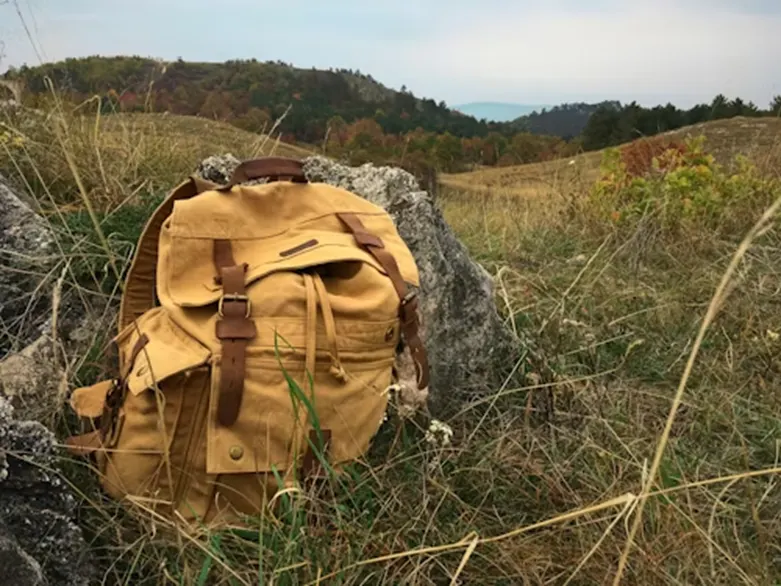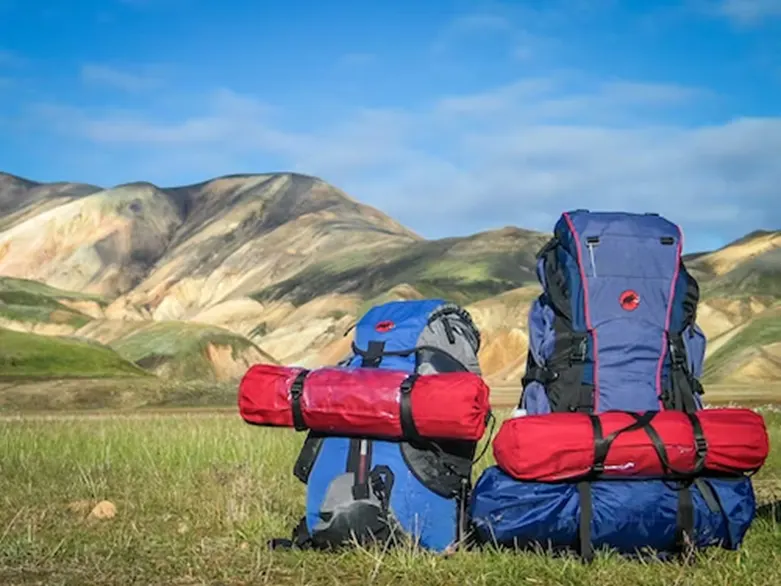What is a backpack? For some, it is just an accessory to carry their stuff, but for some, it accompanies every wilderness trip or hiking expedition. No matter your needs, a sturdy backpack is a necessity for everyone.
However, a quality backpack is not just limited to sturdy construction; it also includes innovative features and the quality of the material. It is imperative to choose a quality backpack that fulfills your needs and makes your expedition more memorable.
Therefore, this comprehensive guide will explore the parameters you can analyze to choose the perfect backpack.
1. Understand the Anatomy of a Backpack

Understanding the standard features of a backpack can help you to know what you require from your new bag. Rucksacks and backpacks features can range from basic to packed with features, like:
- Material – The material of your bag is about personal preference and use. Heavy-duty backpacks are generally made of a strong nylon material that withstands abrasion and varying temperatures.
Backpacks with polyester outer are also a popular option, which is durable and wear-resistant; it doesn’t wrinkle as easily and is more lightweight than nylon. For a more stylish finish, you can choose leather backpacks – with the same durable properties but also requiring a little more care and attention.
- Access – Most backpacks are designed with top access so you can reach into the main compartment from the top of the bag. For traveling and longer trips, front access can be more practical, so you can open the main compartment fully from the front, making packing easier.
Finally, larger rucksacks often feature side or base access to the main compartment that is easy to use and can prevent theft if you’re out and about.
- Shoulder Straps – The larger your bag, the better your shoulder strap needs to be. Padding on straps is paired with a wider surface area to prevent the straps from digging into your shoulders. In smaller bags that will hold less, thinner straps offer more flexibility, and mesh straps are great for ventilation.
- Back Panel – Padded and contoured to provide comfort hour after hour, backpack back panels come in various styles. Look out for adjustable panels to customize your fit for the perfect shape. Added foam provides cushioning, and mesh adds breathability to prevent overheating.

- Frames – Rucksacks are created with both internal and external frames that help to transfer the weight of your bag evenly. Internal frames are often made from steel, but more technical packs are designed with aluminum or carbon fiber, which is lighter.
External frames are usually used in larger capacity bags and come in a range of shapes. Usually made from lightweight aluminum, they’re available in straight frame shapes that aid ventilation between the backpack and the wearer, S-shapes designed to contour to the wearer, and hip frames that transfer weight to the legs for added comfort.
- Pockets – Designed on both the inner and outer of backpacks to help organize your gear, pockets are an essential feature of any good bag. Inner pockets are vital for smaller items, while top, front, and side zipped pockets are great for keeping items at hand while you walk.
Side mesh pockets are most commonly used for bottles and bellows, and side pockets are collapsible, meaning they can be packed away when you’re not using them.

2. Make Sure the Backpack Fits Perfectly
Ensure your bag fits precisely to provide comfort, support, and stability. With lengthy usage, traveling with an ill-fitted backpack might lead to discomfort and injury.
Size counts, so make sure the pack you select fits the length of your body. Since most packs are sized or adjustable, it’s best to measure the length of your back to ensure you choose the correct bag.
A properly fitted backpack should be tight across the shoulders, and to transmit weight efficiently, the hip belt should rest on the hips rather than the waist. While walking, straps should be snug but not too tight, which might lead to discomfort and friction. You should tighten a chest strap until the front of your shoulders starts to feel pressured.
3. Go for Innovative Features
Some additional features to look out for in a backpack include:
- Hip belts to relieve your shoulders of extra weight.
- Shoulder strain is avoided by sternum straps that cross across the chest.
- Hydration compartments are designed to fit a bladder, with a drinking tube exit hole and a mouthpiece closure.
- Bulky packs are compressed with compression straps, which makes them lighter to carry.
- Movable dividers that divide the main compartment.
- Attachment points such as bungee cords, straps, eyelets, and loops are ideal for toting ice axes, trekking poles, and helmets.
- Reflective patches to improve security.
- Rain coverings to protect your pack from even the worst-case scenarios.
- Detachable daysacks are ideal for lengthier excursions if you wish to leave most of your load behind for a day trip.
Conclusion
Backpacks are an essential accessory for every person, regardless of their gender. While many people might choose the first option they browse through, some might take their sweet time considering the various options available.
You must understand the basic structure of a backpack so you know what to look for when choosing a backpack. Therefore, choose a backpack that perfectly fits you and offers advanced features like rain covers, mesh pockets, and secure straps that provide extreme comfort.

Jessi is the creative mind behind The Coffee Mom, a popular blog that combines parenting advice, travel tips, and a love for all things Disney. As a trusted Disney influencer and passionate storyteller, Jessi’s authentic insights and relatable content resonate with readers worldwide.
